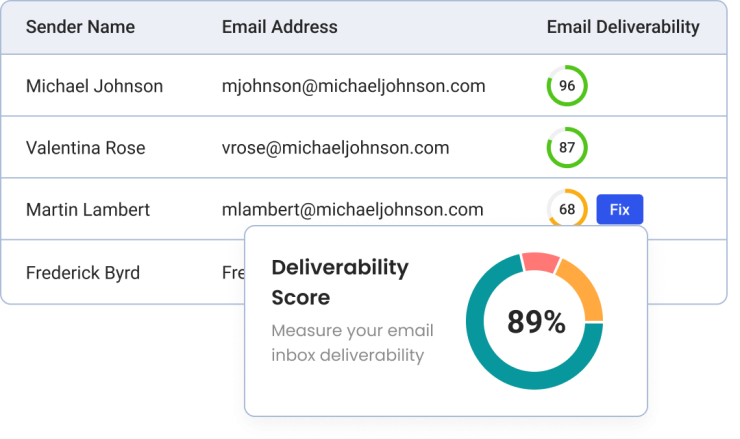In the world of ecommerce, email remains a crucial marketing channel for retailers. But with inboxes overflowing, ensuring your emails actually reach customers is more challenging than ever.
That’s where email deliverability comes in.
Email deliverability refers to the ability of your emails to land in subscribers’ inboxes rather than getting blocked, bounced, or routed to spam folders. A high deliverability rate means more of your audience sees your messages, boosting open rates, clicks, and conversions.
Why Email Deliverability Matters for Retailers
Poor email deliverability cripples your email marketing performance.
If your messages don’t reach the inbox, even the most compelling subject lines and offers won’t help. Deliverability issues result in wasted effort and lost sales opportunities.
On the other hand, optimizing deliverability amplifies the impact of your email campaigns. More messages reach customers, increasing engagement and revenue. With email generating $38 for every $1 spent, improving deliverability yields a high ROI.
Factors Impacting Email Deliverability
Several factors influence whether your retail emails hit the inbox or get filtered out:
- Reputation: Email service providers judge senders based on their reputations. Indicators like spam complaints, bounces, and engagement metrics shape this.
- Authentication: Proper authentication via SPF, DKIM, and DMARC verifies your identity as a legitimate sender.
- List Quality: Purchased lists with invalid or inactive addresses lead to bounces and blocks, damaging your reputation.
- Content: Spammy language, too many images, malware risks, and other red flags can trigger spam filters.
- Volume: Sudden spikes in email volume from your IP address may seem suspicious to ISPs.
5 Tips to Improve Retail Email Deliverability

1. Build and Maintain a Solid Reputation
Your email reputation is the biggest factor determining deliverability. To build a good reputation:
- Get explicit permission and use opt-in lists only
- Make unsubscribing easy and honor requests promptly
- Send consistently without major volume fluctuations
- Maintain good list hygiene by removing inactive addresses
2. Authenticate Your Emails
Proper authentication is email deliverability 101. Implement:
- SPF to authorize sending IPs/hosts
- DKIM to cryptographically sign emails
- DMARC to align SPF and DKIM for stricter validation
3. Provide Value, Not Spam
Email subscribers want relevant, engaging content – not blatant promotions. To avoid spam traps:
- Send personalized, targeted offers based on interests/behavior
- Avoid spammy words like “FREE” or “Get rich quick”
- Include a text-based version along with HTML
- Test emails before sending to identify red flags
4. Warm Up New IPs Gradually
Don’t blast your full list from a fresh IP address. Email providers are wary of sudden volume spikes. Instead warm up your emails:
- Start low and slowly ramp up volume over 4-8 weeks
- Monitor metrics like bounces, blocks, spam traps
- Build up a positive reputation before hitting top volume
5. Monitor and Optimize Deliverability
Improving email deliverability is an ongoing process. Regularly:
- Check blacklists and address blocklisting issues promptly
- Analyze engagement metrics like open/click rates
- A/B test content and sending practices
- Implement feedback from spam filters and subscribers
By prioritizing email deliverability using tactics like these, retailers can maximize the ROI from their email campaigns. More messages reach more customers, driving better results.
Retail Email Deliverability FAQs:
-
What is a good email deliverability rate?
Industry standards consider 95% or higher a good email deliverability rate. However, the ideal target varies based on your sending volume and practices. -
How do I check my email deliverability rate?
Email marketing platforms provide metrics on deliverability, bounces, blocks, etc. Third-party tools also allow you to test deliverability across major ISPs. -
What is email authentication and why is it important?
Email authentication protocols like SPF, DKIM, and DMARC verify you as a legitimate sender to ISPs. Proper authentication boosts deliverability. -
Do purchased email lists hurt deliverability?
Yes, purchased lists often contain outdated, invalid, or non-opt-in addresses that trigger spam filters and damage your sender reputation. -
How do spam traps impact email deliverability?
Spam traps are email addresses used by blacklist operators to catch senders with poor practices. Hitting too many traps gets you blocked. -
Can email content affect deliverability?
Definitely. Spammy words, image-heavy emails, malware risks, and other red flags make messages more likely to be filtered as spam. -
How does email send volume influence deliverability?
Major fluctuations or sudden spikes in send volume from your IP can seem suspicious to ISPs and hurt inbox placement. -
What deliverability metrics should I monitor?
Track bounces, blocks, spam complaints, open rates, and engagement in addition to overall deliverability percentages. -
How can I improve deliverability for dedicated IPs?
Gradually warm up new IPs over 4-8 weeks, starting with low volumes. Build a positive reputation before ramping up fully. -
Do I need special email deliverability software?
Not necessarily, but tools to check authentication, blacklists, spam filters, and engagement can help optimize deliverability.

